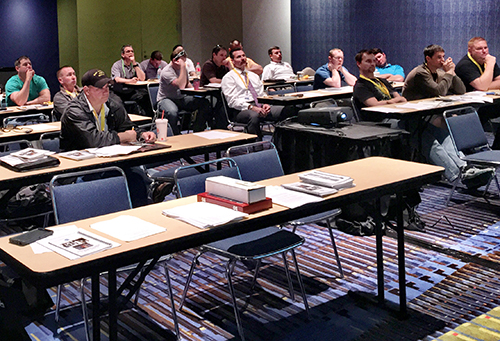Science of Oil Spills Course in Charleston
MARCH 3, 2017--OR&R held a five-day Science of Oil Spills course at the NCCOS Center for Coastal Environmental Health and Biomolecular Research facility at Fort Johnson in Charleston, SC, on February 13-17, 2017.
The training was focused on some of NOAA’s most critical scientific support, tools, processes, and philosophies that help Federal On-Scene Coordinators and members of the Incident Command System respond to oil spills. Response stakeholders come from the federal government, state governments, various resource management agencies, industries, academia, and the public. The class included 40 students. While approximately half were USCG members, others came from federal and state agencies, Tribes, and industry. The mix of response and planning partners enhanced the training with a range of interests, concerns, and responsibilities.
The key theme throughout the training was how we answer five basic questions that help guide response:
- What got spilled?
- Where is it going?
- What will it hit?
- How will it hurt?
- What can we do?
A highlight of the course was a boat tour of Charleston Harbor. During the excursion, the students viewed potential spill sources from various industry locations. They were given information about what oil types and chemicals were stored at each facility and then asked to evaluate what nearby resources at risk might be affected and what response or protection strategies should be considered. The students used information about tides and currents, Environmental Sensitivity Index maps, CAFE toxicity data, and the local geographic response maps to help evaluate each selected spill scenario.
For more information, contact Brad.Benggio@noaa.gov.
Go back to OR&R Weekly Report.

